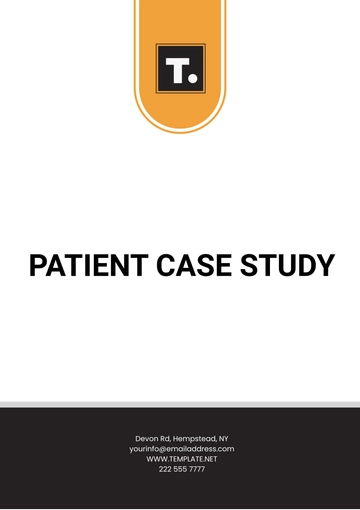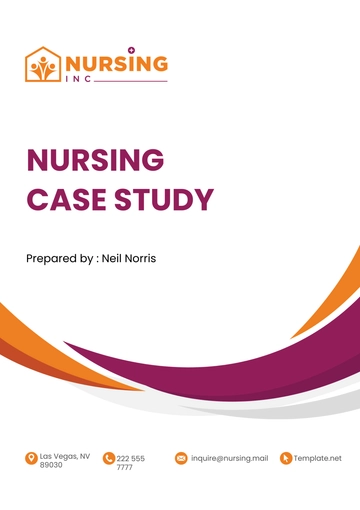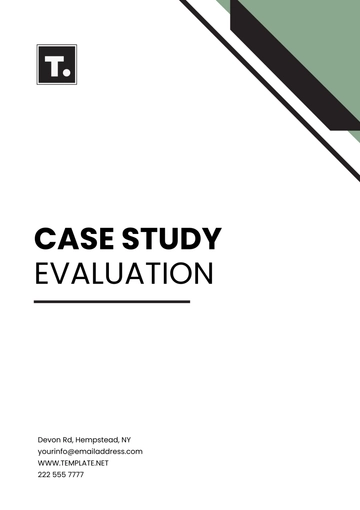Data Driven Case Study
This case study was conducted by [YOUR NAME] from [YOUR DEPARTMENT] at [YOUR COMPANY NAME]. This document showcases how data-driven strategies have significantly improved decision-making processes and contributed to achieving business objectives within the organization.
I. Executive Summary
This section provides an overview of the case study including the main findings, methodology, and outcomes. The case study focuses on the Customer Experience Enhancement Project, which was undertaken to streamline customer interactions and improve overall satisfaction. The results outlined here demonstrate the impact of data-driven decisions across various aspects of the business.
Key insights include a 15% increase in customer satisfaction, a notable 20% reduction in response time to customer queries, and enhanced employee satisfaction as reflected in a 25% decrease in turnover rate. These outcomes underscore the importance of leveraging data in strategic planning and operational adjustments.
II. Background Information
The subject of this case study, the Customer Experience Department, had faced challenges such as inconsistent customer satisfaction levels, long response times to queries, and difficulty in tracking customer interactions across multiple channels. Recognizing the necessity for improved data utilization, [Your Company Name] implemented a series of data-driven initiatives aimed at transforming its approach to both internal and external processes.
Historically, decision-making was based on anecdotal evidence and limited insights gathered from manual reporting processes. The shift to a data-driven approach required a cultural change and the integration of advanced data analytics technologies and methodologies into the day-to-day operations of [Your Company Name].
III. Data Gathering and Analysis
Data for this study was collected using a combination of methods including surveys, operational data, and third-party data sources. [YOUR NAME] and the team employed tools such as Microsoft Excel, SQL databases, and Tableau, which helped in handling large datasets and performing complex analyses.
The analysis phase involved statistical analysis and predictive modeling techniques. The data was segmented into various categories such as customer demographics, purchasing behavior, and feedback sentiments, which allowed for targeted insights tailored to specific operational improvements.
IV. Implementation of Changes
Following the data analysis, a series of changes were implemented within [YOUR DEPARTMENT]. These included:
Implementation of a new customer relationship management (CRM) software to streamline customer interactions and improve data management.
Introduction of weekly team meetings to enhance communication and collaboration among team members.
Restructuring of workflow processes to reduce redundancy and improve efficiency.
Each implementation was closely monitored to measure impact and adjust as necessary.
The table below highlights the major implementations alongside the outcomes achieved:
Change Implemented | Description | Impact/Outcome |
|---|
CRM Software | Implementation of a new CRM software system. | Improved data management and customer interactions. |
Weekly Team Meetings | Introduction of weekly team meetings. | Enhanced communication and collaboration among team members. |
Workflow Restructuring | Restructuring of workflow processes. | Reduced redundancy and improved efficiency. |
V. Results and Discussion
This section delves into the results obtained from the aforementioned implementations. The significant results included:
Increase in customer satisfaction by 15%.
Reduction in response time to customer queries by 20%.
Enhanced employee satisfaction as reflected in a 25% decrease in turnover rate.
VI. Conclusions and Future Directions
This case study reveals data-driven strategies are critical for today's businesses, supporting measurable improvements across our operations. We aim to expand our use of data analytics and continuously gather and analyze data to optimize strategies. Spearheaded by [YOUR NAME], this shows our commitment to becoming a data-focused entity.
Prepared By:
[Your Name]
[Your Position]
[Your Department]
Contact Details:
[Your Email]
[Your Company Name]
[Your Company Address]
Case Study Templates @ Template.net






























